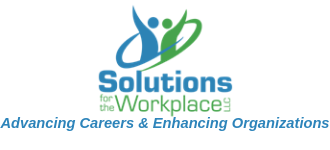The days of noting: “References Available Upon Request” on your resume are over (and have been, for quite some time). Do not list references on your resume. Instead, create a Reference Page to provide to hiring managers upon request. You should take your reference page to all interviews and have it ready to share.
Here’s what a reference page should look like and the information it should contain:
- The formatting of your reference page should match the formatting of your resume in terms of font and any graphics used.
- The top of your reference page should include your name and contact information (at least your phone and email address). You may also want to include your customized LinkedIn URL.
- You should have at least 3 and no more than 5 references; all should be professional. The information on each reference should include: the reference name, title, organization, City, ST, email, and phone. You may also want to consider including the reference’s relationship to you.
- Your most important reference should be the first one. And if possible, your references should have some familiarity with the skills required for the job you’re targeting. It is acceptable to use difference references for different positions.
- Don’t forget to double-check all spelling and contact information.
You shouldn’t wait until you’re getting called in for interviews to contact people you want to use as references.
It can take some time to track down and reach references, catch them up on where you’re at in your career, and obtain their contact information. You don’t want to try to do that while you’re researching and preparing for a job interview.
Before providing someone as a reference, be sure to ask for permission. Not everyone you’ve worked for — or worked with — will be a good reference for you. You want a reference that can be as enthusiastic about you as you are about getting the job. Not all potential references will be able to provide this kind of stellar recommendation. But some of your references may be hesitant to say no to you directly if you ask.
Give them a way to let themselves off the hook, without turning you down directly. Instead of asking, “Will you be a reference for me?” Ask them, “Do you feel you know me well enough to serve as a reference for me?” You also want to update them on what you’ve been up to (especially if they knew you at a previous job) and what you’re looking for in your next job.
Immediately send a letter or email thanking them for serving as a reference, and provide a current copy of your resume.
If you provide a name as a reference for a particular job, contact them right away after the interview to let them know. Give them the company name, position title you’re seeking, and the name, title, email address, and phone number for the person who may be calling. Let them know some of the critical challenges and responsibilities of the position so they will be prepared to discuss specific skills, experience, and achievements from their work with you.
Ask them to let you know if they are contacted about a particular opportunity. (When they do let you know, ask what kind of questions they were asked.) This not only allows you to find out what information was collected in the reference check, but also can prompt you to write them a handwritten thank-you note, thanking them for their support.
